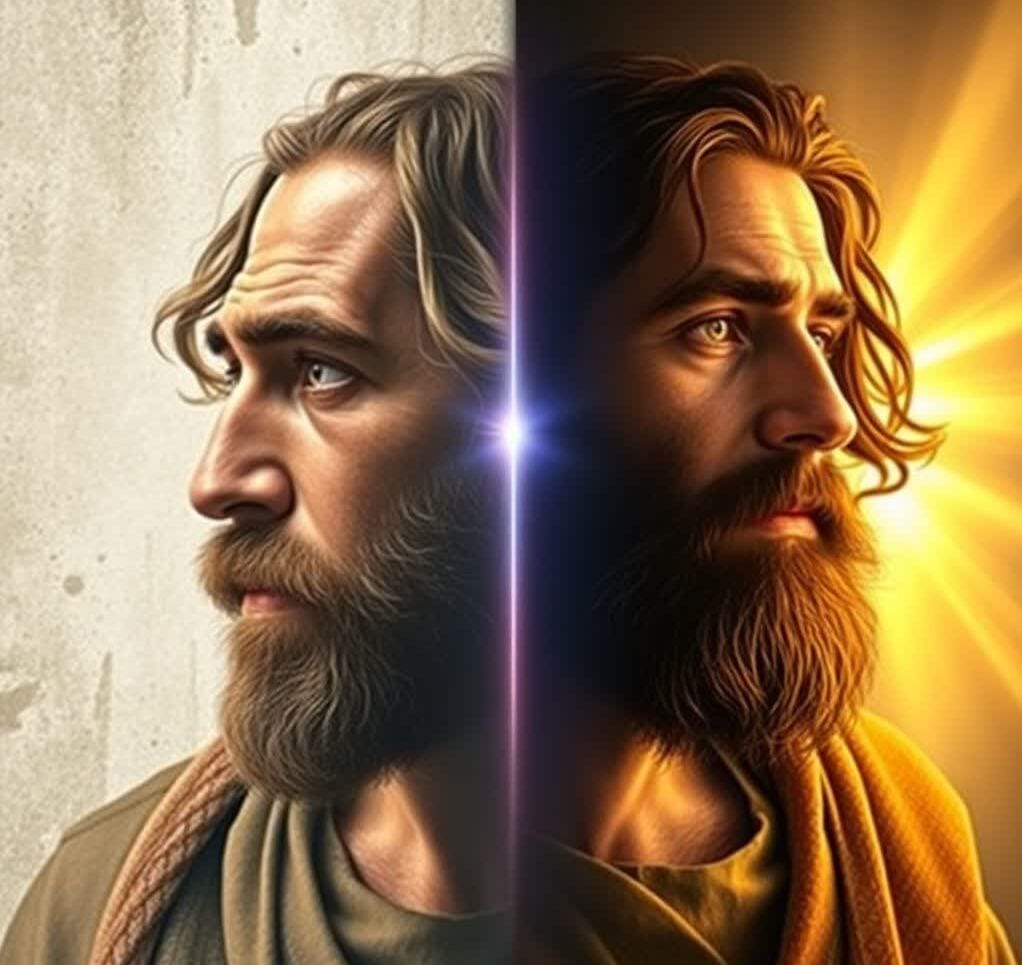Chapter 13: More another Gates– Ephraim & The Prison Gate (Mercy and Restoration)
👉 Read Chapter 14: Jesus for Everyone to explore how Christ’s message touches every life with divine purpose.
In the study of Jerusalem’s gates in Nehemiah, twelve primary gates are reconstructed and spiritually significant. Yet, there are a few additional gates referenced elsewhere in Scripture and Jewish tradition that warrant closer examination. Two such gates are the Ephraim Gate and the Prison Gate. Though not part of Nehemiah’s detailed reconstruction in chapter 3, these gates carry deep theological weight, pointing to the enduring themes of mercy, restoration, and second chances in God’s redemptive plan.
1. The Ephraim Gate – A Symbol of Mercy and Return
The Ephraim Gate is mentioned in Nehemiah 8:16, during the celebration of the Feast of Tabernacles. Historically, Ephraim was one of the leading tribes of Israel—associated with strength, fruitfulness, and unfortunately, rebellion. Its location on the northern side of the city made it an exit point, symbolizing departure and exile. Yet its mention during a time of joyful restoration signifies return, mercy, and new beginnings.
This gate reminds us that even those who stray far—like the tribe of Ephraim—are not beyond God’s mercy. Hosea 11:8 captures God’s heart: “How can I give you up, Ephraim? … My heart is turned within Me, My compassion is stirred.” The Ephraim Gate represents God’s mercy extended to the rebellious, His willingness to restore those who return to Him.
In the New Testament, the prodigal son (Luke 15) embodies this spirit. Though he left his father’s house in rebellion, he was welcomed back with grace. The Ephraim Gate invites us to return from exile—whether physical, emotional, or spiritual—and find mercy waiting at the threshold.
2. The Prison Gate – The Place of Release and Freedom
The Prison Gate, referenced in Nehemiah 12:39, was likely near the royal palace and served as a military and judicial facility. At first glance, a prison might seem like an unlikely symbol for hope or spiritual insight. However, in God’s kingdom, places of bondage often become places of freedom and transformation.
Throughout Scripture, God’s servants have found themselves in prison—Joseph, Jeremiah, Peter, and Paul. Yet, their confinement became the context for divine revelation, character development, and miraculous deliverance.
- Joseph interpreted dreams and rose to power (Genesis 39-41).
- Jeremiah received God’s word under persecution (Jeremiah 37).
- Peter was set free by an angel (Acts 12).
- Paul and Silas worshipped in chains and saw the jailer saved (Acts 16).
The Prison Gate therefore points to a paradox: God can use our lowest points to bring about our greatest breakthroughs. It stands as a reminder that no prison—whether of sin, shame, addiction, or fear—is too strong for God’s power to break.
3. Mercy and Restoration as Ongoing Themes
Both the Ephraim and Prison Gates emphasize God’s relentless commitment to restoration. The gates of Jerusalem not only guard a city but also frame the story of redemption. While the main twelve gates represent stages in spiritual maturity, these bonus gates speak to the heart of God that always makes room for mercy.
Restoration is not a one-time act. It is a process that unfolds throughout a believer’s life. Whether we find ourselves wandering far like Ephraim or chained by circumstances like Paul, God’s grace invites us to walk through these gates and find newness of life.
Psalm 107:14 says, “He brought them out of darkness and the shadow of death, and broke their chains in pieces.” That’s the message of these two gates—mercy for the prodigal and freedom for the bound.
4. Jesus and the Fulfillment of the Gates
Jesus is the embodiment of every gate. He is the door to the sheepfold (John 10:7), the one who opens what no man can shut. In Him, the Ephraim Gate finds its fulfillment in the story of repentance and grace. The Prison Gate finds its victory in His resurrection power.
In Luke 4:18, Jesus declares His mission: “He has sent Me to heal the brokenhearted, to proclaim liberty to the captives.” Every gate in Nehemiah’s wall whispers His name, and these bonus gates shout His mercy.
5. Application for Today’s Believers
How do we walk through these gates today?
- Ephraim Gate: Return to God. Even if you feel far, disqualified, or ashamed, God’s mercy waits at the gate. Like the father watching for the prodigal, God waits to embrace you.
- Prison Gate: Ask God to break chains. Whether it’s fear, addiction, unforgiveness, or despair, His power is greater. What seems like a prison may become your platform.
These gates teach us that God’s kingdom is one of grace and restoration, not exclusion and condemnation. He welcomes the wayward and liberates the imprisoned.
6. The Church as Gatekeepers of Mercy
Churches and ministries today are called to be gatekeepers of grace. That means providing space for prodigals to return without shame, and walking alongside those in bondage until they find freedom. Just as Nehemiah appointed gatekeepers, modern leaders are called to steward the spiritual gates of their communities with compassion and wisdom.
The Ephraim Gate and Prison Gate remind us that no one is beyond hope. Restoration must remain a visible, tangible ministry in every church body.
7. The Circular Completion: From Salvation to Mercy
If the journey through the gates began at the Sheep Gate and moved through cleansing, brokenness, power, and accountability, then it beautifully ends with mercy and restoration. This is not by accident. The gospel always circles back to grace. No matter how far we’ve gone or how low we’ve fallen, there’s a gate open for us.
8. Final Thoughts: Mercy Always Has a Gate
The gates of Jerusalem were not just defensive structures—they were access points. The Ephraim Gate and The Prison Gate show us that God has provided access for the broken, the rebellious, and the bound. These gates preach the good news that restoration is real, freedom is possible, and mercy never ends.
Let them remind us:
- You can always return (Ephraim Gate)
- You can always be set free (Prison Gate)
- You are never beyond hope
Jesus says, “I am the gate; whoever enters through me will be saved. They will come in and go out, and find pasture” (John 10:9).
More Another Gates – Discovering the Depth of Divine Access
In the study of biblical architecture and symbolism, few themes are as compelling as the gates of Jerusalem. While the twelve gates of Nehemiah receive frequent attention, More another Gates exist within the biblical narrative that provide insight into God’s heart for mercy, restoration, and second chances. These More another Gates are not merely structural remnants of ancient walls—they are spiritual signposts of God’s ongoing invitation to humanity.
The concept of More another Gates opens our eyes to lesser-known entry points into divine truth. For example, the Ephraim Gate, not emphasized in Nehemiah’s construction record, represents the mercy God shows to the rebellious. The Prison Gate, another of the More another Gates, reveals the transforming power of grace in the darkest of circumstances. These More another Gates are powerful reminders that God does not limit His access points—He continually provides new pathways to reach His people.
Many believers only focus on the major gates in their spiritual journey. However, exploring More another Gates reveals fresh revelations and overlooked blessings. These gates stand for restoration from exile, deliverance from captivity, and the opening of doors that many assumed were permanently shut. In fact, the very phrase More another Gates should stir curiosity about what other spiritual transitions God is inviting us into.
The theme of More another Gates also challenges church leaders and ministries to expand their vision. Are we offering access only through well-trodden paths? Or are we making room for the outcast, the prodigal, the prisoner—those who find their way to Christ through More another Gates? Scripture shows us that God is not bound by a single formula. His mercy meets people in prisons, deserts, and places of brokenness—through gates both known and hidden.
By studying More another Gates, we uncover how God operates beyond our human boundaries. He desires to bring freedom and grace to every soul. These gates may not always be beautiful or prestigious. Some, like the Prison Gate, symbolize hardship and confinement. Yet they also point to divine breakthroughs and miraculous deliverance.
In your personal faith journey, you may be approaching one of these More another Gates without realizing it. Perhaps you’re not at the Sheep Gate or the Water Gate, but at the gate of deep internal struggle or delayed promise. Even there, God stands ready to open the way. That’s the power of More another Gates—they meet you where traditional paths may fail.
In conclusion, embracing the reality of More another Gates in Scripture and in life will enrich your understanding of God’s redemptive map. Don’t overlook these secondary gates. They often lead to primary encounters with His mercy. Let us walk through More another Gates with expectation, faith, and the assurance that no gate is beyond God’s grace.
To explore more insights on how gates in Scripture reflect spiritual transformation and divine purpose, be sure to read our full collection on Jesus for Everyone. This powerful resource dives into how everyday believers can access God’s mercy, walk in freedom, and live a life led by Christ. Whether you’re studying More another Gates like the Ephraim and Prison Gates or reflecting on foundational biblical truths, this site offers deep, encouraging content rooted in Scripture. We recommend bookmarking We Love God Daily for ongoing spiritual growth and discipleship tools.

